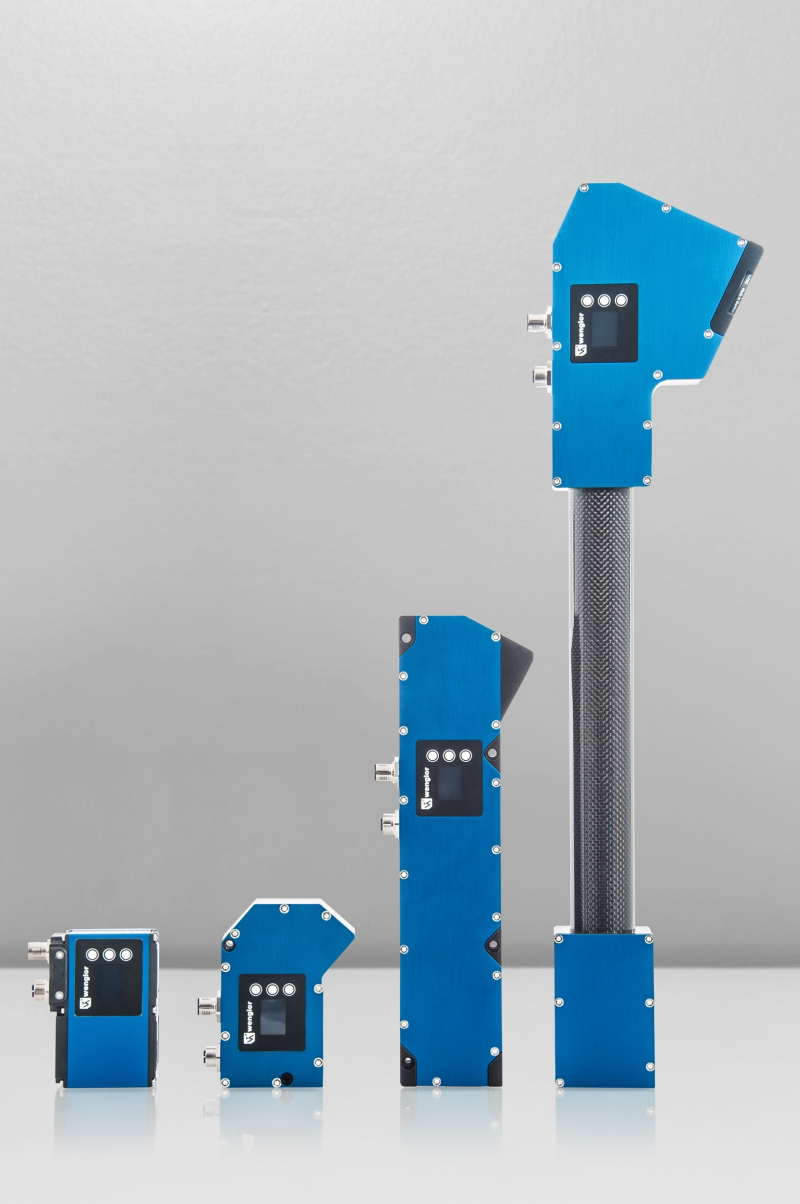 wenglor Presents the New weCat3D Sensor Generation for 3-Dimensional Object Measurement
wenglor Presents the New weCat3D Sensor Generation for 3-Dimensional Object Measurement
Well-developed instincts and sharply tuned senses are necessary in order to accurately measure objects 3 dimensionally – a skill reserved strictly for people and animals until recently. For the first time ever, wenglor is succeeding in scanning and evaluating objects in 3 dimensions with its broad range of weCat3D Profile Sensors. The profile data collected by the sensors can either be read out directly as measured values or used for rapid further processing of the point cloud.
3D calculation of volume is of great significance in particular in the food industry, but in many other industries too such as machinery manufacturing, woodworking and the electronics industry, as well as the automotive and pharmaceuticals industries. For example, large food service companies expect all supplied cuts of meat to precisely comply with weight and geometry specifications. Thanks to their outstanding performance, the 2D/3D Sensors are already being used in many cutting systems. But railway measurements, welding head guidance, glue bead monitoring, angle and width measurements, as well as roundness measurements and much more have already found their way into practical application with the help of this technology.
Convincing Performance: More Than 12 Million Measuring Points per Second
The weCat3D series works with a visual field width within a range of 30 to 1300 mm in the horizontal X-axis and is capable of detecting differences in height of just 2.0 µm within the Z working range – at a rate of 3.6 to 12 million measuring points per second. Available laser classes (1, 2M, 3R, 3B) and two selectable types of light (red, blue) result in a diverse product portfolio with more than 70 models.
Two Performance Classes and a Thousand Possibilities
The weCat3D MLSL, with a weight of just 300 g and a space-saving housing (90 x 36 x 64 mm), scans as many as 3.6 million measuring points per second, has an output rate of up to 4000 Hz, as well as a resolution of down to 22 µm in visual field width X and down to 3.3 µm in working distance Z.
The weCat3D MLWL scans up to 12 million measuring points per second, has an output rate of up to 6000 Hz, visual field widths from 30 to 1300 mm and high resolution (down to 17 µm in visual field width X and down to 2.0 µm in working distance Z).
Thanks to extremely high resolution in the Z and X directions, the sensors can detect extremely small components in the micron range (e.g. and assembled PCBs). Thanks to special algorithms, the sensors generate powerful measuring signals andtop quality profile data, which are not even impaired by glossy, reflective surfaces such as metals. An extremely high dynamic range also assures that objects can be precisely measured nearly independent off color and brightness.
weCat3D highlights at a glance:
- Visual field width from 30 to 1300 mm in the X direction
- 3.6 to 12 million measuring points per second
- Minimum resolution: 2.0 µm in the Z direction
- 4 selectable laser classes (1, 2M, 3R, 3B)
- 2 selectable types of light (red, blue)
- Integrated CPU without additional controller
- GigE Vision standard, e.g. for incorporating Halcon or LabVIEW
- Open interfaces with DLL for customer software in C++, C# or Visual Basic
- Future-proof thanks to RS-422 TTL encoder and standard HTL encoder
- Ethernet TCP/IP as of 100 Mbit/s up to 1 GBit/s
-
Intuitive OLED display and integrated, multilingual web server
 Instrumentation Monthly Test | Measurement | Control
Instrumentation Monthly Test | Measurement | Control